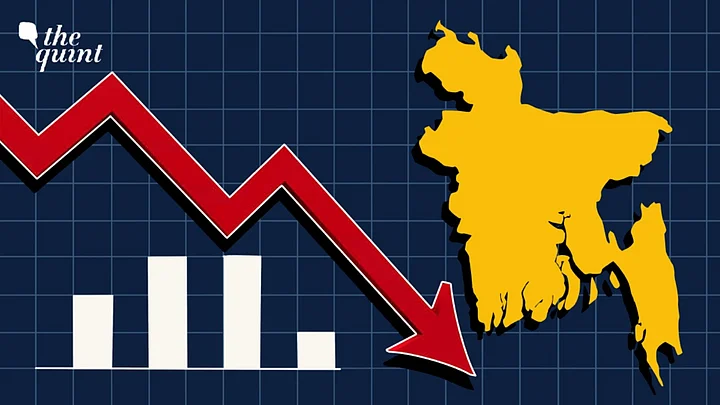The roaring, enviable, decadal success of Bangladesh as one of the fastest-growing South Asian Economies has been well documented, discussed, and set as an example for developing nations across the globe.
Recent numbers though indicate a worrying trend for Bangladesh.
Poor export demand, high inflation, falling remittances, depleting forex reserves, and an energy crisis are swiftly affecting the economy’s fundamentals and might be taking it in the wrong direction.
What Contributed to Bangladesh’s Ailing Economy?
Other institutions like the World Bank and the Asian Development Bank too, are in the process of providing financial assistance to Bangladesh while talks are on between its government and the Japan International Cooperation Agency (JICA), the Asian Infrastructure Investment Bank (AIIB) for assistance. Let’s take a closer look at the state of Bangladesh’s economy, and its macroeconomic fundamentals, to get a sense of where it stands.
It has been well known that Bangladesh’s economic health has rested broadly on three things being better managed—exports, remittances, and fuel prices. All of these have been badly hit in the polycrisis that has engulfed the whole world.
On growth, while macro-trends over the last decade allowed Bangladesh’s GDP growth rate and per capita growth levels to be much better than most of its other South Asian partners (including India), since 2019, and the Covid shock, high inflation measured by a persistently high Consumer Price Index(CPI) rate, has been a serious concern.
Persistently high consumer prices often act as an invisible tax on the poorer sections of society. Higher (energy) prices also led to rationing and swelling of the government’s fuel subsidy bill.
While Bangladesh's growth story was much talked about, its rate of infrastructural growth and energy needs have always been a problem, so, when there is a shock like seen with Covid, the Russia-Ukraine war, and the US-led sanctions against it have all added tremendous pressure on the country’s overall balance of payments and foreign import bills (given, domestic infrastructural capacity in power generation is low).
As per a recent NPR report, “In July, the capital city of Dhaka began suffering two-hour rolling blackouts. Officials say that could last through 2026. On 4 October, the lights went out across almost all of Bangladesh simultaneously for up to 10 hours.” Given Bangladeshi government, like India, subsidises the price of fuel, a high energy import bill is rapidly depleting its foreign currency reserves too.
This is happening amidst a weakening of Bangladesh’s GDP in the Manufacturing sector (see below) and a weak current account to GDP position. So, even if exports may be going up, if the import bill is high, it will negatively impact the current account balance, thus, taking the export-led benefits away (a factor that has single-handedly led the inspiring growth story of the Bangladeshi economy).
What Can Bangladesh Do To Avoid Sri Lanka-Like Debt Situation?
The current account to GDP level remains negatively balanced while the macro-GDP growth from manufacturing has been nowhere close to the pre-2015 levels for some time now. Remittances too, have been falling rapidly which was adding reserves to the forex kitty. What might be driving the trend of lowering (foreign) remittances is difficult to say at this point.
However, fiscally too, the Bangladesh Government’s purse is stretched.
It spent a lot during Covid which exacerbated its government debt to the GDP level. Fortunately, on overall debt, while the situation for Bangladesh isn’t as bad as Sri Lanka or Pakistan, it is right to be concerned— taking precautionary borrowing measures to keep enough foreign currency liquidity for short to medium-term needs. A higher dollar price due to global factors has helped its cause.
Still, the overall external debt levels for the nation ballooned post-2017 (see Figure below) and the Bangladeshi government at this point would need to be careful in how much it borrows from the external sector or institutions. As of March 2022, Japan ranks the highest in terms of Bangladesh’s percentage of bilateral debt—out of total bilateral debt, at 45 percent.
Even though the national government has taken measures to borrow from multiple multilateral sources, it will still need to have a robust fiscal reform plan in place to ensure its dependence on external borrowings does not lead to a debt-bubble burst-like crisis situation as seen in Sri Lanka.
Rising Unemployment Plagues Bangladesh
As a developing nation, it may also need to keep in mind the different conditionalities attached to multilateral lending, coming from institutions like the IMF-World Bank, which has its own effects on the nation’s ability-capability to (re)form.
On labour performance indicators, as seen below, two things strike out: a slowly rising unemployment rate and a flattening disposable personal income level (seen since 2015).
The latter (flattening disposal income) has serious medium to long-term implications when higher consumer prices make the common citizenry spend more on essential consumer goods.
A flattened income level amidst rising prices, for those positioned at the lower income-consumption pyramid, will push them to borrow more over time and, in absence of higher or alternative income sources, may subsequently increase household debt levels.
Overall, looking closely at the numbers here, a lot would remain to be seen and observed with respect to Bangladesh’s macroeconomic performance and the measures taken by its national government in handling its economic problems from hereon.
(The author is Associate Professor of Economics, OP Jindal Global University. He is currently Visiting Professor, Department of Economics, Carleton University. He tweets @Deepanshu_1810. This is an opinion piece and the views expressed above are the author’s own. The Quint neither endorses nor is responsible for the same.)
